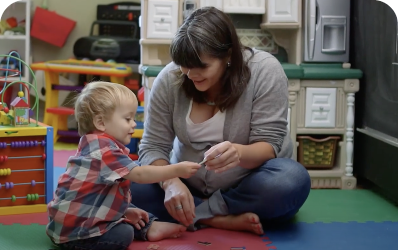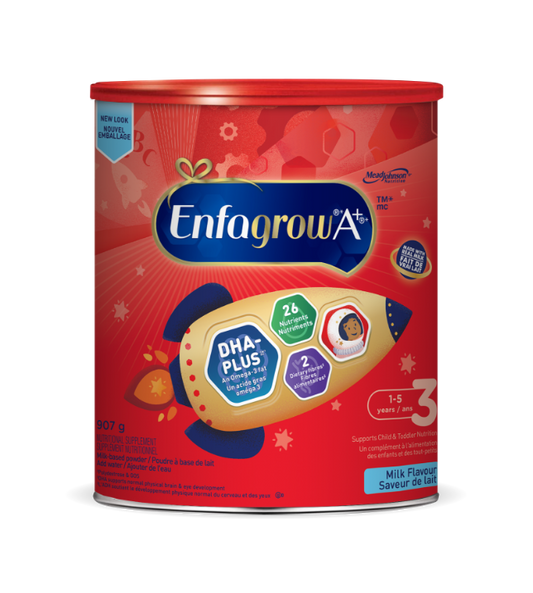Read about the role of exercise in brain development.
Like most parents, you probably pay close attention to what your child eats, trying to make sure she gets enough nutrients every day. But do you also pay attention to how active she is? As with her diet, it’s never too early to instill healthy habits in your child.
Many public health organizations recommend that, beginning in infancy, parents make sure their children engage in physical activities every day. By the time children reach preschool age (3 to 5 years old), the Canadian Society for Exercise Physiology (CSEP) recommends progressing to at least 60 minutes of energetic play /physical activity daily. However, a review of 139 studies involving 10,316 children in nine countries found that 46 percent of preschoolers were not even getting half that amount.

The Many Benefits of Fitness Researchers have found that it’s during the toddler years when at least some features of our inherited (or heritable) temperament begin to appear, and they’ll have an influence on our temperaments throughout our lives. The behavioral characteristics that appear to be most heritable are activity level, irritability level, and negative emotionality. On the other hand, rest assured that even though elements of temperament are inherited, there’s no guarantee that a temperament style (especially a difficult or negative one) will appear in all children in a family or even in a succeeding generation. Experiences matter a lot!
A 2010 study in the journal Brain Research found that 9- and 10-year-olds with higher fitness levels had larger hippocampi—an area of the brain associated with long-term and relational memory (the ability to learn and remember the relationship between unrelated items)—and performed better on cognitive tasks measuring relational memory. Of course, the sooner you begin with even simple fitness activities, the better.
And a 2010 study in Developmental Review concluded that physically fit children perform cognitive tasks of executive function more rapidly than less fit children. It also pointed to specific benefits associated with particular types of exercise. For instance, children who took part in an aerobic exercise program performed better on tests of executive function (EF)—the ability to make decisions, organize, plan, and follow directions—than those who participated in standard physical education classes.
Multiple studies confirm these findings and have left researchers to speculate that multiple pathways are involved: To begin with, aerobic games often require the same kind of strategic, adaptive, and goal-directed behaviour that’s involved in EF. They also call for complex movement and skill, which is supported by the prefrontal neural circuitry that also supports EF. In addition, aerobic exercise has been shown to cause physiological changes in the brain, not only an immediate neurochemical response but also, for regular exercisers, structural changes to regions associated with learning.
Exercise also affects children’s motor skills. A 2012 study from Perceptual & Motor Skills: Exercise and Sport of more than 400 3- to 5-year-olds during a 20-month period found that those who engaged in a weekly 45-minute session of physical education, along with daily sessions of at least 20 minutes of physical activity, had larger improvements in coordination, physical fitness, and dexterity than those who took part in only the 45-minute physical education sessions. What’s more, some studies suggest that children who exercise perform better on tasks of executive function than their sedentary classmates.
Starting Early Makes Sense It’s never too soon to encourage activity in children. In fact, studies indicate that a correlation between physical activity and cognition begins in early infancy, with each contributing to advances in the other over time. Early bursts of gross motor movement coincide with basic attention, and later, crawling and walking correspond to adaptive and flexible thinking.
The preschool years are an ideal time to establish healthful exercise habits, because as children transition to school age they’re more apt to develop eating and leisure patterns that don’t meet current recommendations and can lead to obesity. According to a 2009 study in the Journal of Nutrition Education and Behaviour, parents of children aged 2 to 5 years believed that their children had good eating habits and were physically active, but as their children got older, parents felt that they ate less healthful food and were more sedentary.
You don’t need to implement a daily regimen of jumping jacks and push-ups, and you certainly don’t need to make your kids run on a treadmill. But encouraging them to be active for at least 60 minutes every day—away from video games and computer, tablet, or television screens—is a great way to help them understand the importance of exercise and recognize that you believe it’s a priority for them.








